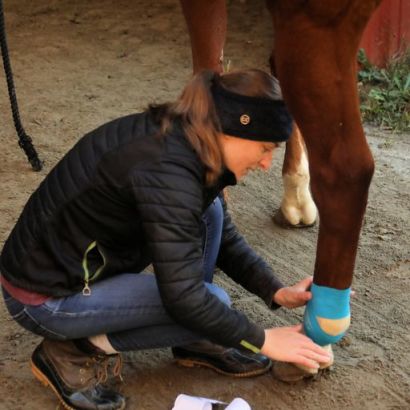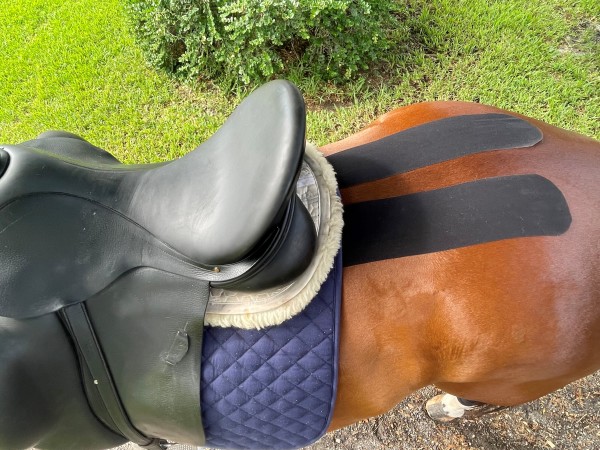Therapeutic Tape for Horses – Equine Kinesiology Taping
Updated March 29, 2024 | By: Andris J. Kaneps, DVM, PhD, DACVS, DACVSR

Elastic therapeutic tape (known as kinesiology, kinesiotaping, or equitaping) is a way to provide soft tissue manipulation over an extended period of time by stretching the skin. It’s thought to prolong the effects similar to massage while supporting muscles and allowing free movement of joints.
The therapeutic tape has a specific thickness, stretch, and weight that mimics the skin’s outermost layer (some even try to copy a fingerprint pattern). When the elastic tape attaches to the skin, it lifts and thereby decompresses the tissue. As the skin decompresses, it encourages circulation and lymphatic drainage.
Elastic taping techniques differ greatly depending on the location and what’s being treated. Because equine skin has different elasticity and more hair than human skin, specific tapes have been designed for use on horses.
Benefits of Kinesiology Tape for Horses

Although research into its effects on horses and humans is sparse, kinesiotaping has been found to provide lymphatic, circulatory, and neuromuscular effects[1].
- Could support injured, overused, or weak muscles
- May help stabilize joints, ligaments, tendons, and fascia
- May enhance proprioception (awareness of the body’s position)
How to Use Kinesiology Tape on Horses

First, look for a certified veterinary taping practitioner or enroll yourself in an equine taping class or certification course. Some general guidelines for kinesiology taping include:
- The tape must be strategically placed in the right location and with a certain amount of stretch that will be effective without irritating the skin.
- Loosely applied tape lifts the skin and can enhance blood and lymphatic flow.
- Tape applied with significant stretch will support muscles and joints under the applied tape.
Examples of Therapeutic Tape in the Barn
- As a preventative aid to support horses in intense training
- Applied on a stocked-up leg to encourage the swelling to drain

Ask the Vet Video on Kinesiotaping for Pain Relief
References
1. Molle S. Veterinary Clinics of North America 2016;32:103-113
